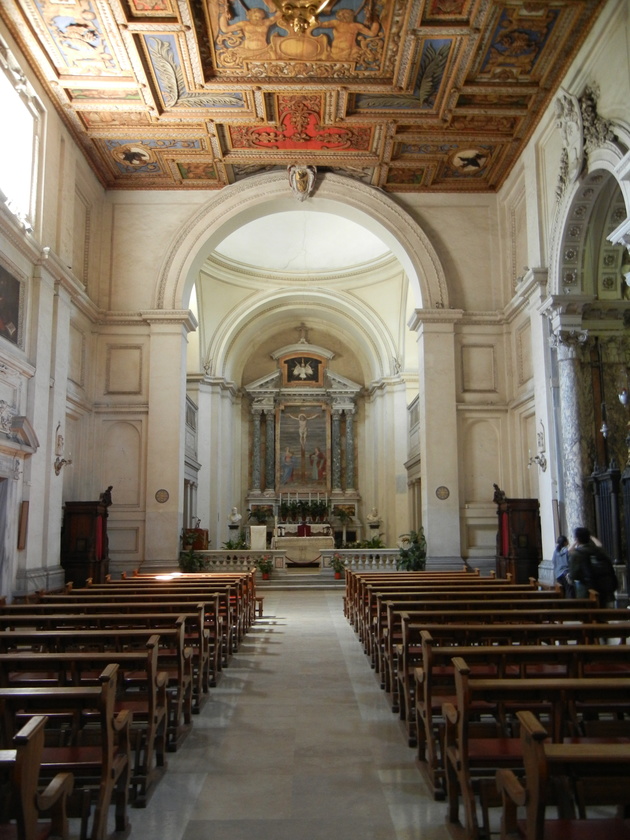Day 8 was catacomb day, and I don't have many photos in the catacombs. We started at the catacombs of Marcellino and Pietro, which have only recently been opened to the public.
Then the catacombs at San Sebastiano. Also at San Sebastiano is the relic of the footprints of Jesus, from the site of the "Quo Vadis?" vision. That comes from one of the apocryphal acts documents, the Acts of Peter, and was then incorporated into a novel, called Quo Vadis? and then the movie of the same name (about 1953, I think). If you've never seen it, it's a great classic sword and sandal flick, not very historically accurate, but still fun. The story is that Peter met the risen Christ on the Appian Way, and Jesus left footprints in the stone. The stone with the footprints are in the church of San Sebastiano (see the photo). We were planning to go to the Quo Vadis chapel, on the supposed site of the vision, along the Appian Way, but we got behind and never made it there. But in any case, even if the footprints of Jesus are not "real" the point I always make is that it's important that Jesus did leave footprints in his life - in other words that he was not a phantom as the gnostics claimed, but that he was truly and fully human (as well as being divine).
We ended the day at San Lorenzo Fuori le Mura (St. Lawrence Outside the Walls), where the tomb of St. Lawrence is, and St. Justin Martyr is also in there with him. This church was accidentally hit by a bomb during WWII and had to be partially rebuilt. The last photo I'm including is a photo from the wreckage right after the bomb hit (it's on the wall in the sacristy, so I took a photo of the photo). It looks like Jesus is pulling St. Francis out of the rubble!
I mentioned in The Journey that I wrote a song based on Isaiah 2, which is one of my favorite OT passages:
In days to come, the mountain of the Lord’s house
shall be established as the highest mountain, and raised above the hills.
All nations shall stream toward it. Many peoples shall come and say:
“Come, let us go up to the Lord’s mountain, to the house of the God of Jacob, That he may instruct us in his ways, and we may walk in his paths.” For from Zion shall go forth instruction, and the word of the Lord from Jerusalem.
He shall judge between the nations, and set terms for many peoples.
They shall beat their swords into plowshares, and their spears into pruning hooks; One nation shall not raise the sword against another, nor shall they train for war again. House of Jacob, come, let us walk in the light of the Lord!
I hope you like the song!
















